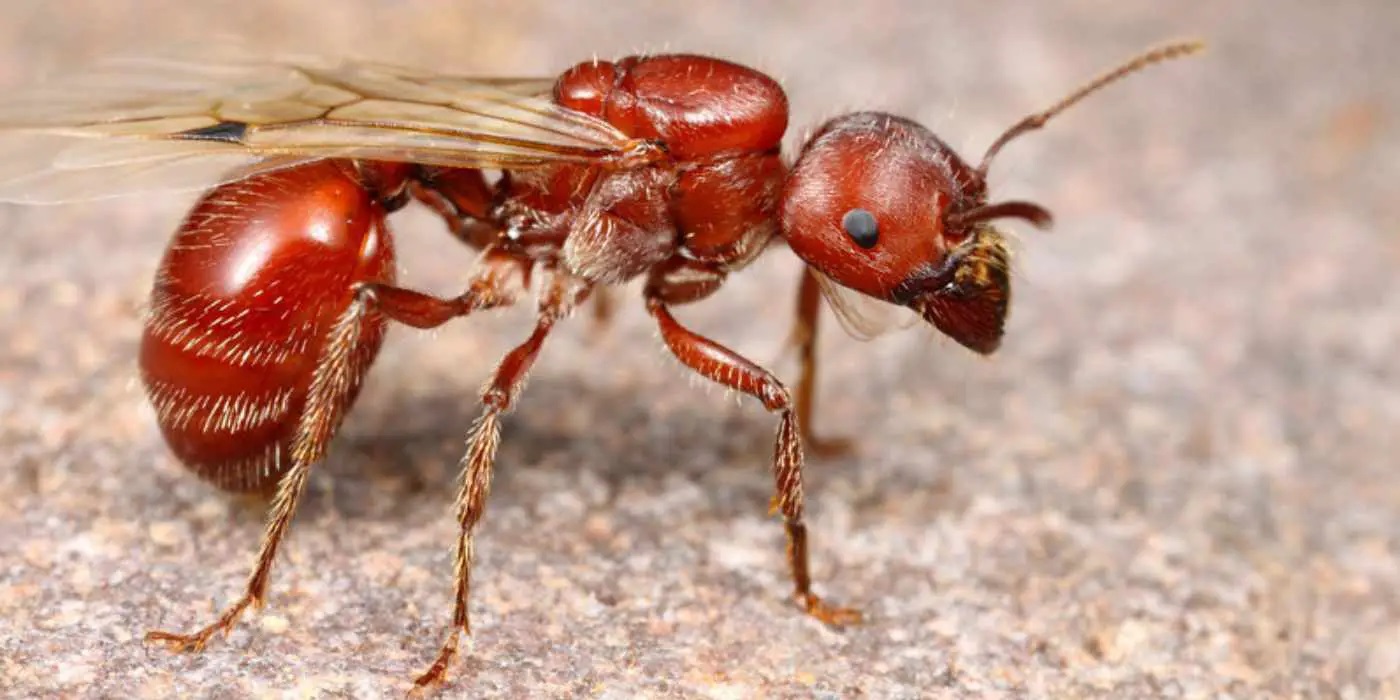
Ants are fascinating creatures that are found all over the world, including the western regions. One type of ant that stands out in the western parts is the Western Harvester Ant. These tiny but formidable creatures are known for their organized colonies and unique behaviors. In this article, we will explore 15 interesting facts about Western Harvester Ants, shedding light on their social structure, foraging habits, and remarkable adaptations. From their impressive underground tunnels to their powerful jaws and complex communication systems, Western Harvester Ants exhibit remarkable traits that have earned them a place of admiration in the animal kingdom. So, let’s delve into the intriguing world of these industrious and resilient Western Harvester Ants.
Key Takeaways:
- Western Harvester Ants are fascinating creatures native to North America, known for their large colonies, excellent foraging abilities, and unique seed storage methods. They play crucial roles in their ecosystems and exhibit complex behaviors.
- These ants have powerful jaws, multiple queens in a colony, and contribute to soil aeration and nutrient recycling. They also practice ant “farming” and have impressive navigational skills, making them truly remarkable creatures in the animal kingdom.
Western Harvester Ants are native to North America.
These fascinating ants can be found throughout various regions of North America, including the western parts of the United States and southwestern Canada. They have adapted to a diverse range of habitats, from deserts to grasslands.
Western Harvester Ants are known for their large colonies.
These ants are highly social creatures, living in colonies that can consist of thousands of individuals. The colonies are organized with a caste system, consisting of queens, male ants, and worker ants.
Western Harvester Ants are excellent foragers.
These ants have a unique ability to forage for food over long distances. They will travel up to 600 feet away from their nests in search of seeds, insects, and other sources of nutrition.
Western Harvester Ants have a fascinating method of seed storage.
These ants collect and store seeds in underground chambers, helping to disperse the seeds and contribute to the ecosystem. The seeds that are not consumed by the ants may eventually grow into new plants.
Western Harvester Ants are highly territorial.
These ants fiercely defend their territories from intruders, including other ant species. They use pheromone trails and aggressive behaviors to mark and protect their foraging areas.
Western Harvester Ants have a unique communication system.
These ants communicate using a combination of chemical signals and tactile interactions. They release pheromones to leave scent trails, allowing other ants to follow the path to food sources.
Western Harvester Ants have powerful jaws.
These ants possess strong mandibles that they use to crush and manipulate seeds and other materials. Their jaws are essential for their seed-processing capabilities.
Western Harvester Ants can have multiple queens in a colony.
Unlike some other ant species, Western Harvester Ant colonies can have multiple reproductive queens. This allows for increased reproductive potential and colony growth.
Western Harvester Ants play an important role in soil aeration.
As these ants dig extensive underground tunnels, they help to aerate the soil and improve its overall quality. Their activities contribute to nutrient cycling and soil health.
Western Harvester Ants practice a form of ant “farming”.
Some Western Harvester Ant colonies cultivate a mutualistic relationship with aphids. The ants protect the aphids and “milk” them for their sugary honeydew secretions, providing the ants with a valuable food source.
Western Harvester Ants have a unique defense mechanism.
When threatened, these ants can release formic acid as a defense mechanism. The acid is ejected from special glands, acting as a deterrent to potential predators.
Western Harvester Ants are capable of adjusting their foraging strategies.
These ants can adapt their foraging behavior depending on the availability of resources. If food sources become scarce, they can switch from generalist foraging to focusing on specific plant species.
Western Harvester Ants contribute to nutrient recycling.
As they process and disperse seeds, these ants play a vital role in the ecological process of nutrient recycling. Their activities help to redistribute nutrients throughout their environment.
Western Harvester Ants have a relatively long lifespan.
Compared to some other ant species, Western Harvester Ants can live for several years. The queens have the longest lifespan, often surviving for up to 20 years.
Western Harvester Ants exhibit complex navigational abilities.
These ants have impressive navigational skills, utilizing landmarks, celestial cues, and a sense of direction to find their way back to their nests after foraging trips.
Conclusion
Western Harvester Ants are fascinating creatures that play a vital role in the ecosystem they inhabit. From their unique nesting habits to their intricate social structure, these ants have captivated the curiosity of both scientists and nature enthusiasts alike. With their powerful mandibles and impressive foraging abilities, they are able to collect and store large quantities of food for their colony. Not only do they provide valuable services to the environment, but they also offer a glimpse into the intricate workings of the animal kingdom. By understanding and appreciating the fascinating facts about Western Harvester Ants, we can gain a deeper appreciation for the diversity and complexity of nature.
FAQs
1. What is the lifespan of a Western Harvester Ant?
The average lifespan of a worker ant is approximately 1 to 3 years.
2. How do Western Harvester Ants communicate with each other?
These ants primarily communicate through chemical signals known as pheromones.
3. Are Western Harvester Ants aggressive towards humans?
While Western Harvester Ants can sting if threatened, they generally prefer to avoid human interaction and focus on foraging for food.
4. How many individuals are there in a Western Harvester Ant colony?
A typical colony of Western Harvester Ants can comprise anywhere between a few hundred to several thousand individuals.
5. What is the role of the queen in a Western Harvester Ant colony?
The queen is responsible for laying eggs and ensuring the survival and growth of the colony.
6. Do Western Harvester Ants have a specific diet?
They are omnivorous and primarily feed on seeds, nectar, insects, and other small invertebrates.
7. Can Western Harvester Ants cause damage to plants or crops?
Yes, these ants can sometimes damage plants and crops by excavating soil around their roots. However, their beneficial activities in aerating the soil often outweigh the potential negative impact.
8. Do Western Harvester Ants hibernate during winter?
Yes, during the colder months, these ants enter a state of dormancy known as hibernation to conserve energy.
9. Are Western Harvester Ants found in other parts of the world?
No, Western Harvester Ants are primarily native to arid regions of western North America.
10. Can Western Harvester Ants be kept as pets?
While it is possible to keep Western Harvester Ants in captivity, proper knowledge and care are required to ensure their well-being. It is always advisable to appreciate and observe them in their natural habitat.
Was this page helpful?
Our commitment to delivering trustworthy and engaging content is at the heart of what we do. Each fact on our site is contributed by real users like you, bringing a wealth of diverse insights and information. To ensure the highest standards of accuracy and reliability, our dedicated editors meticulously review each submission. This process guarantees that the facts we share are not only fascinating but also credible. Trust in our commitment to quality and authenticity as you explore and learn with us.


